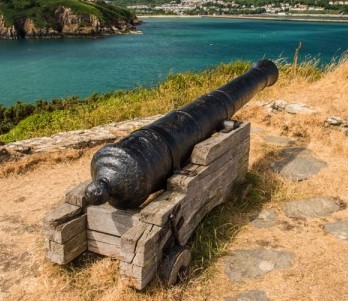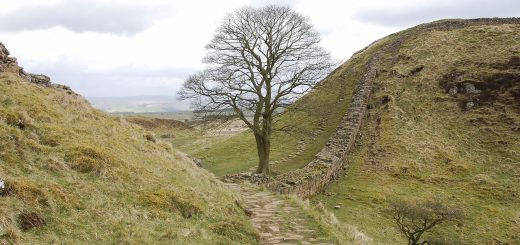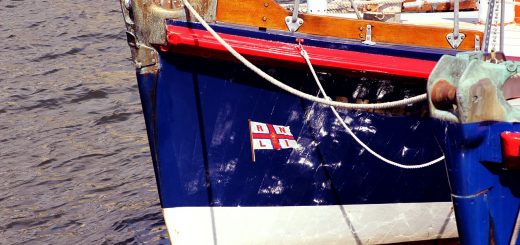A Brief History of Fishguard’s Fort

When Fishguard Fort was built in the late 18th century, the town was an important port for the herring trade. It was the place where the catch came to be dried, salted, smoked and finally exported.Timber, coal and limestone were landed here too as they came in by sea.
It was also the site of a small cloth-producing factory and was a hive of activity for smugglers who brought wine and spirits into the area through isolated coves.
All of this activity was bound to attract the attention of American and French privateers who made a nuisance of themselves during the American War of Independence, but in 1779 the infamous Black Prince, an American ship sailing under the French flag, made a bold attack on Fishguard.
Prior to this incident, the Black Prince had sunk 30 British vessels along the coast, so was well known to locals. On this occasion Captain Stephen Manhant demanded a £1,000 ransom from the townspeople who refused to pay up. The result was his opening fire on the town, doing some damage but being repelled by the local smugglers using their own cannon.
Fishguard folk undaunted wrote to the Privy Council asking for cannons for the town. The Privy Council agreed, but the agreement was conditional upon the people building a fort where the cannons could be housed.
The townspeople set to work and completed the fort on Castle Point, which measured 30 metres by 25 metres, in 1781. Built from stone, it faced north and west and was soon armed with eight nine-pounder cannons and manned by three London gunners and some local volunteers.
The cannons weighed around 1.5 tons each with a range of around 1,000 yards. Though the iron ammunition was in short supply it could certainly be relied upon to severely damage the wooden ships of the day.
The cannons certainly proved to be a deterrent when a 1,400-man French fleet entered Fishguard Harbour on 22 February, 1797. It was fired upon using blanks as warning shots and the would-be intruders beat a hasty retreat, choosing to land elsewhere.
The fort was manned until the early 20th century and brought back into service during the Second World War as a lookout point with two Lewis machine guns in place.
If you would like to take a look yourself at the remains of the structure, it features on the Pembrokeshire Coast Path trail and is a designated Site of Special Scientific Interest. Park in the car park at the top of the hill (on the Newport side of Fishguard) and stroll down the path towards the fort.
P. S. We have had the following information from a local source. I haven’t mentioned the persons name but I will do if they will give permission. It’s always good to have correct info so thank you for your valuable input.
They say “It’s not true that Fishguard Fort “was manned until the early 20thC”. Pamela Horn’s well researched 1982 booklet The Building of Fishguard Fort states “With the ending of the [Napoleonic] War in 1815 one of the main reasons for the maintenance of the fort was lost and over the course of the following decades it was allowed to fall into disrepair…..No mention was made of the old fort at Fishguard [in the 1860 Royal Commission into national defences]….17 years later an OS map of the area showed the building to be disused and this was confirmed in1909 by a Pocket Guide to the town which referred to the fort as a ruin.”
We would be very interested in more local history, or items of interest. Thank you for keeping us on track.




















